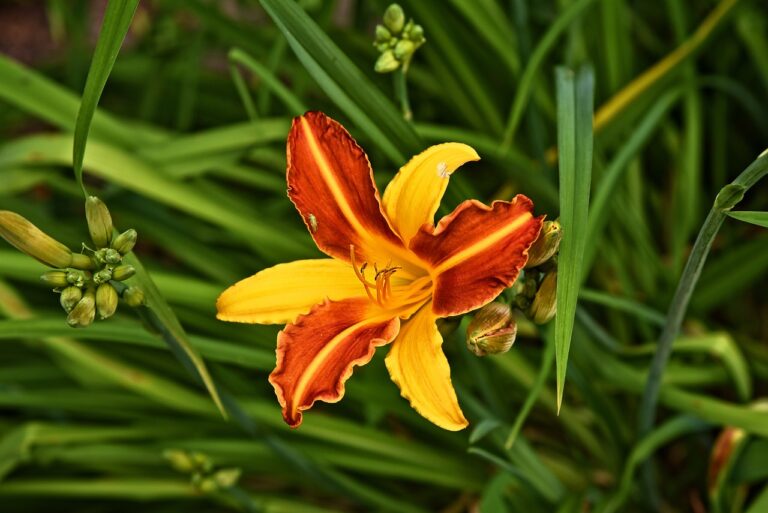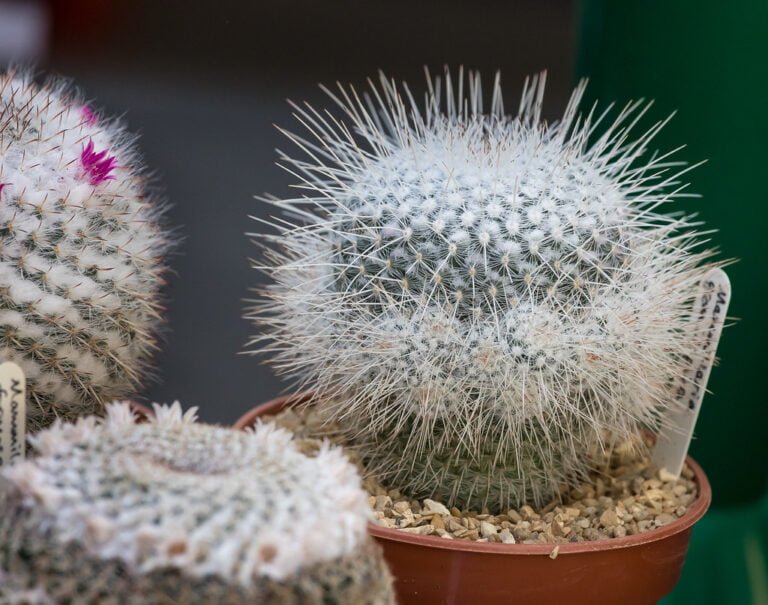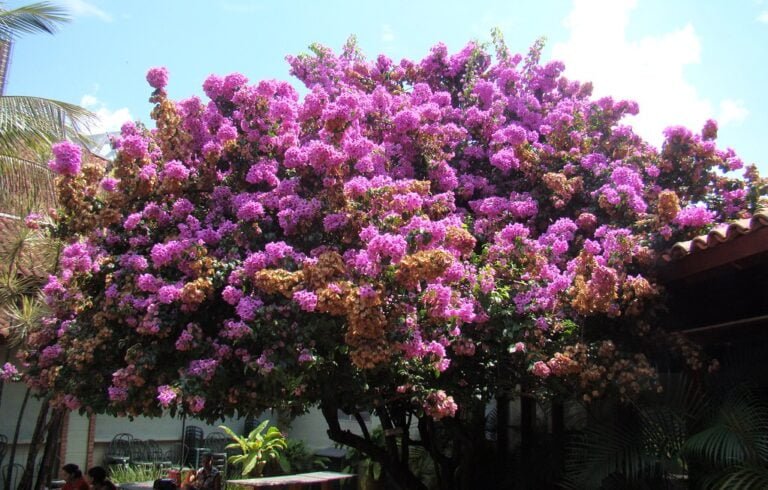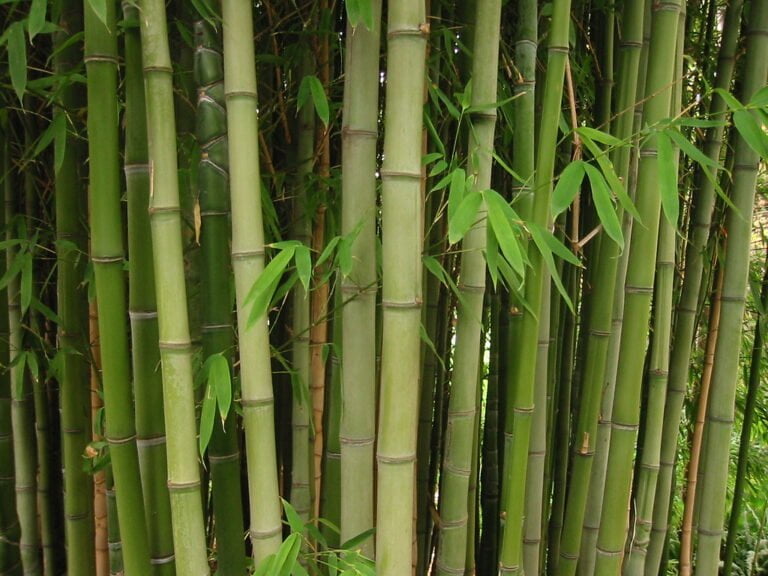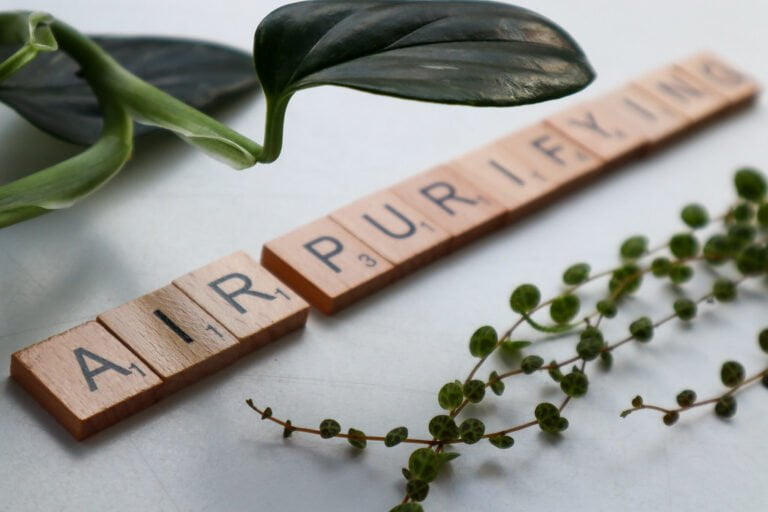Ornamental Grasses
Hey there! Looking to add a bit of pizzazz to your garden? Well, look no further than ornamental grasses. These beauties bring a touch of elegance and a whole lot of charm to any outdoor space. With their graceful swaying and vibrant pops of color, they’re like the prima ballerinas of the garden world.
Want to create a serene sanctuary where you can unwind? Or maybe you’re aiming for a bold and eye-catching display that’ll have your neighbors green with envy? Either way, ornamental grasses have got your back. They’re super easy to take care of and can be styled in countless ways to suit your fancy.
Imagine your garden as a canvas, and these grasses as your paintbrush. You have the power to create a masterpiece that reflects your unique style and personality. And the best part? These grasses are the perfect sidekicks, always ready to enhance your garden and make it truly extraordinary.
So, why wait? Embrace the beauty and versatility of ornamental grasses, and watch your garden come alive with their mesmerizing dance. Trust me, it’ll be a sight to behold!
Key Characteristics
One key characteristic of ornamental grasses is their low maintenance requirements. If you’re looking for a plant that adds beauty to your garden without demanding too much of your time and effort, ornamental grasses are the perfect choice. These grasses are known for their ability to thrive in various soil conditions and climates, making them versatile and easy to grow.
To ensure successful growth, there are a few important growing tips to keep in mind. First, it’s important to choose the right location for your ornamental grasses. Most varieties prefer full sun, although some can tolerate partial shade. Additionally, make sure the soil is well-draining, as these grasses don’t thrive in waterlogged conditions.
When it comes to maintenance requirements, ornamental grasses are relatively low-maintenance. They generally require minimal watering once established, as they’ve deep root systems that can access water from deeper soil layers. However, it’s important to water newly planted grasses regularly until they become established.
Another important maintenance task is pruning. In late winter or early spring, it’s recommended to cut back ornamental grasses to about six inches above the ground. This helps promote healthy growth and prevents the grasses from becoming too crowded.
Overall, ornamental grasses are a great addition to any garden due to their low maintenance requirements. With proper growing tips and minimal effort, you can enjoy the beauty and elegance they bring to your outdoor space.
Life Cycle
To understand the life cycle of ornamental grasses, you need to consider their growth and development from seed to maturity. Ornamental grasses can be propagated through several methods, including seed, division, and transplanting. Here is a breakdown of their life cycle and the seasonal maintenance required:
- Propagation methods:
- Seed: Ornamental grasses can be grown from seed, which allows for a wide variety of options. Sow the seeds in a well-prepared seedbed in early spring or early fall, and keep the soil moist until germination occurs.
- Division: Dividing the clumps of ornamental grasses is a common method of propagation. This is typically done in early spring or early fall when the plants are dormant. Gently dig up the clump, separate it into smaller sections, and replant them in well-prepared soil.
- Seasonal maintenance:
- Spring: In spring, remove any dead or damaged foliage from the previous year. Trim back the ornamental grasses to about 6 inches above the ground to encourage new growth. Apply a slow-release fertilizer to provide nutrients for the coming season.
- Summer: During summer, ornamental grasses require regular watering to keep them hydrated. Remove any weeds that may compete for nutrients and space. Monitor for pests and diseases and take appropriate action if necessary.
- Fall: In fall, leave the foliage intact as it adds texture and interest to the garden. Cut back the grasses to about 3 inches above the ground in late fall or early winter to prevent winter damage.
Understanding the life cycle of ornamental grasses is essential for their successful cultivation. By following proper propagation methods and seasonal maintenance, you can ensure the health and beauty of these versatile plants in your garden.
Habitat and Growing Conditions
When considering the habitat and growing conditions for ornamental grasses, it is important to understand their specific requirements for optimal growth and development. Ornamental grasses are incredibly versatile and can thrive in a variety of habitats, from sunny meadows to shady woodland areas. However, each species has its own unique habitat requirements and ideal growing conditions.
To help you better understand these requirements, here is a table outlining the habitat preferences and ideal growing conditions for three popular types of ornamental grasses:
| Grass Species | Habitat Requirements | Ideal Growing Conditions |
|---|---|---|
| Feather Reed | Moist, well-drained soil | Full sun to light shade |
| Grass | Tolerates wet soil | |
| Fountain | Moist, fertile soil | Full sun to part shade |
| Grass | Grows well near water | |
| Maiden | Drought-tolerant | Full sun to light shade |
| Grass | Thrives in sandy, well-drained | |
| soil |
Feather Reed Grass, for example, prefers moist, well-drained soil and can tolerate both full sun and light shade. Fountain Grass, on the other hand, thrives in moist, fertile soil and can tolerate part shade. Maiden Grass, known for its drought-tolerance, grows best in sandy, well-drained soil and can adapt to full sun or light shade.
Understanding the habitat requirements and ideal growing conditions for ornamental grasses is crucial for their success in your garden. By providing the right environment, you can ensure that these beautiful grasses will thrive and bring beauty to your landscape.
Popular Varieties
Discover the wide array of popular varieties of ornamental grasses that can add beauty and texture to your garden. Ornamental grasses are a versatile addition to any landscape, providing interest and movement with their unique shapes and colors.
Here are some popular varieties that you can consider planting in your garden:
- Fountain Grasses:
- Pennisetum alopecuroides: Also known as ‘Hameln’, this compact variety is perfect for smaller gardens and borders. It produces fluffy, bottlebrush-like flower spikes that sway gracefully in the breeze.
- Pennisetum setaceum: Commonly referred to as ‘Purple Fountain Grass’, this variety adds a pop of color with its burgundy foliage and feathery plumes. It’s a great choice for adding drama to your garden.
- Switch Grasses:
- Panicum virgatum: This native grass offers a range of cultivars, such as ‘Shenandoah’ and ‘Northwind’. With their upright habit and attractive seedheads, they provide a stunning backdrop in any garden.
- Maiden Grasses:
- Miscanthus sinensis: This group of grasses includes popular varieties like ‘Gracillimus’ and ‘Morning Light’. With their arching foliage and graceful plumes, they create a soft and elegant look in your garden.
Planting techniques for ornamental grasses vary depending on the specific variety, but most prefer well-drained soil and full sun. It’s important to prepare the soil by loosening it and removing any weeds before planting. Remember to water the grasses regularly during their first growing season to help establish strong root systems.
Ornamental grass maintenance is generally low, making them a great choice for busy gardeners. They require minimal pruning, usually just cutting back the dead foliage in early spring. Some varieties may benefit from dividing every few years to maintain their vigor.
Cultivation and Care
Maintain the health and beauty of your ornamental grasses with proper cultivation and care. To ensure successful growth and propagation of your ornamental grasses, it’s important to follow the right techniques. Let’s explore some key cultivation and care practices that will help you keep your ornamental grasses thriving.
When it comes to propagation methods, ornamental grasses can be grown from seeds, divisions, or plugs. Seeds are generally sown in late winter or early spring, while divisions and plugs are best done in early spring or late summer. It’s important to choose a well-draining soil mix and provide adequate moisture during the establishment phase.
Pruning techniques play a crucial role in maintaining the shape and health of ornamental grasses. In late winter or early spring, it’s recommended to cut back the old foliage to about 2-3 inches above the ground. This helps in removing dead or damaged leaves and promotes new growth. However, some grasses like Miscanthus don’t require annual pruning and can be left uncut until early spring.
Regular watering is essential for the overall health of ornamental grasses. While they’re generally drought-tolerant, it’s important to water them deeply and infrequently, allowing the soil to dry out between waterings. Avoid overwatering, as it can lead to root rot and other fungal diseases.
Fertilizing ornamental grasses can be done in early spring or late fall using a balanced slow-release fertilizer. This will provide the necessary nutrients for healthy growth. Avoid using excessive amounts of nitrogen, as it can result in lush foliage but weak stems.
Landscaping and Design
To enhance the aesthetic appeal of your landscape, incorporate various types of ornamental grasses into your design. Ornamental grasses add beauty, movement, and texture to your outdoor space. They come in a wide range of colors and sizes, making them versatile and suitable for any landscaping project.
When it comes to color combinations, ornamental grasses offer endless possibilities. You can choose from a variety of grasses that range from vibrant greens to deep purples, and even golden hues. By carefully selecting complementary colors, you can create a harmonious and visually striking landscape. For example, pairing a deep green grass with a purple variety can create a dramatic and eye-catching contrast. Alternatively, combining different shades of green can result in a serene and tranquil atmosphere.
In addition to color, the use of textures in landscaping can greatly enhance the overall design. Ornamental grasses are known for their unique and often intricate textures. By mixing grasses with different textures, you can add depth and dimension to your landscape. For instance, pairing a fine-textured grass with a more coarse variety creates an interesting juxtaposition. The soft and delicate leaves of some grasses can provide a graceful and elegant touch to your design, while the feathery plumes of others can add a playful and whimsical element.
Incorporating ornamental grasses into your landscape design allows you to create a visually appealing and dynamic outdoor space. By carefully considering color combinations and using textures effectively, you can achieve a landscape that’s both aesthetically pleasing and inviting.
Common Issues and Solutions
If you encounter any issues with your ornamental grasses, there are several common problems that you may face and solutions to address them. One common issue is pest control. Pests such as aphids, spider mites, and grasshoppers can damage your ornamental grasses. To combat these pests, you can use insecticidal soap or horticultural oil to spray on the grasses. These products are safe for use on ornamental grasses and can effectively control pests. Another common issue is winter protection. Ornamental grasses can be vulnerable to cold temperatures and frost damage. To protect your grasses during winter, you can mulch around the base of the plants with straw or shredded leaves. This will help insulate the roots and protect them from freezing. Additionally, you can tie the grass blades together with twine or burlap to prevent them from breaking or bending under the weight of snow or ice. Here is a table summarizing the common issues and solutions for ornamental grasses:
| Common Issues | Solutions |
|---|---|
| Pest control | Use insecticidal soap or horticultural oil to control pests |
| Winter protection | Mulch around the base of the plants and tie the grass blades together |
Practical Uses
When it comes to practical uses, ornamental grasses can be utilized in a variety of ways to enhance the beauty and functionality of your garden. These versatile plants offer numerous benefits in agriculture and have a positive environmental impact. Here are some ways you can incorporate ornamental grasses into your garden:
- Erosion Control: Ornamental grasses have deep root systems that help stabilize soil, making them excellent for controlling erosion on slopes or areas prone to runoff. Their extensive root network helps hold soil in place, preventing it from being washed away by heavy rainfall or strong winds.
- Wildlife Habitat: Ornamental grasses provide food and shelter for various wildlife species, such as birds, butterflies, and insects. The seed heads of grasses attract birds, while the dense foliage offers hiding places for small animals. By planting ornamental grasses, you can create a thriving ecosystem and contribute to the biodiversity of your garden.
- Privacy Screening: Taller varieties of ornamental grasses, like Miscanthus or Panicum, can be used to create natural privacy screens. These grasses grow in dense clumps, forming a visual barrier that adds privacy to your outdoor space. Their swaying foliage also adds movement and interest to your garden.
- Low-Maintenance Landscaping: Ornamental grasses are known for their low-maintenance nature. Once established, they require minimal watering and can withstand drought conditions. They also have good resistance to pests and diseases, reducing the need for chemical treatments. Incorporating ornamental grasses in your garden can save you time and effort in maintenance, allowing you to enjoy a beautiful landscape without excessive upkeep.
Frequently Asked Questions
Can Ornamental Grasses Be Used as Privacy Screens or Hedges in a Garden?
Yes, ornamental grasses can be used as privacy screens or hedges in your garden. They offer several privacy benefits, such as tall, dense foliage that blocks the view from outside.
These grasses can create a natural and beautiful barrier, adding charm to your garden while providing privacy.
Additionally, they require minimal maintenance, making them an excellent choice for those who want an attractive privacy solution without the hassle of frequent upkeep.
How Often Do Ornamental Grasses Need to Be Watered?
When it comes to watering ornamental grasses, it’s important to consider their different needs. Some varieties prefer a bit more water, while others are more drought-tolerant. The key is to find the right balance.
As for planting locations, ornamental grasses thrive in areas with well-drained soil and plenty of sunlight. Keep an eye on the weather and adjust your watering schedule accordingly.
Do Ornamental Grasses Attract Specific Pests or Diseases That I Should Be Aware Of?
When it comes to ornamental grasses, it’s important to know if they attract any specific pests or diseases. Being aware of the common diseases affecting these grasses can help you take necessary precautions. Keep an eye out for any signs of infestation or disease, such as discoloration, wilting, or unusual growth patterns.
It’s a good idea to regularly inspect your grasses and take prompt action if you notice any issues. By staying vigilant, you can ensure the health and beauty of your ornamental grasses.
Can Ornamental Grasses Be Grown in Containers or Do They Require Planting in the Ground?
Container gardening provides a convenient and versatile option for growing ornamental grasses. By planting them in containers, you can easily move them around your garden or patio to create the desired visual effect.
Additionally, container gardening allows for better control over soil conditions and drainage, preventing potential issues like waterlogging.
The benefits of planting ornamental grasses in containers include the ability to showcase their unique textures and colors, while also minimizing the risk of them spreading uncontrollably in your garden.
Are There Any Specific Ornamental Grasses That Are Known to Be Deer-Resistant?
Looking to add some privacy to your yard while keeping pesky deer away? Well, you’re in luck!
There are specific ornamental grasses that are known to be deer-resistant. These grasses not only provide a beautiful and natural screen for your outdoor space, but they also deter those hungry deer from munching on your plants.
Conclusion
Ornamental grasses add a touch of elegance and beauty to any landscape. With their unique textures and graceful movements, they bring life and movement to gardens and outdoor spaces.
From the vibrant colors of Purple Fountain Grass to the delicate plumes of Pampas Grass, these plants offer endless possibilities for creative landscaping.
With a little care and attention, you can enjoy the beauty of ornamental grasses all year round. So go ahead, let these stunning plants transform your outdoor space into a mesmerizing oasis!

